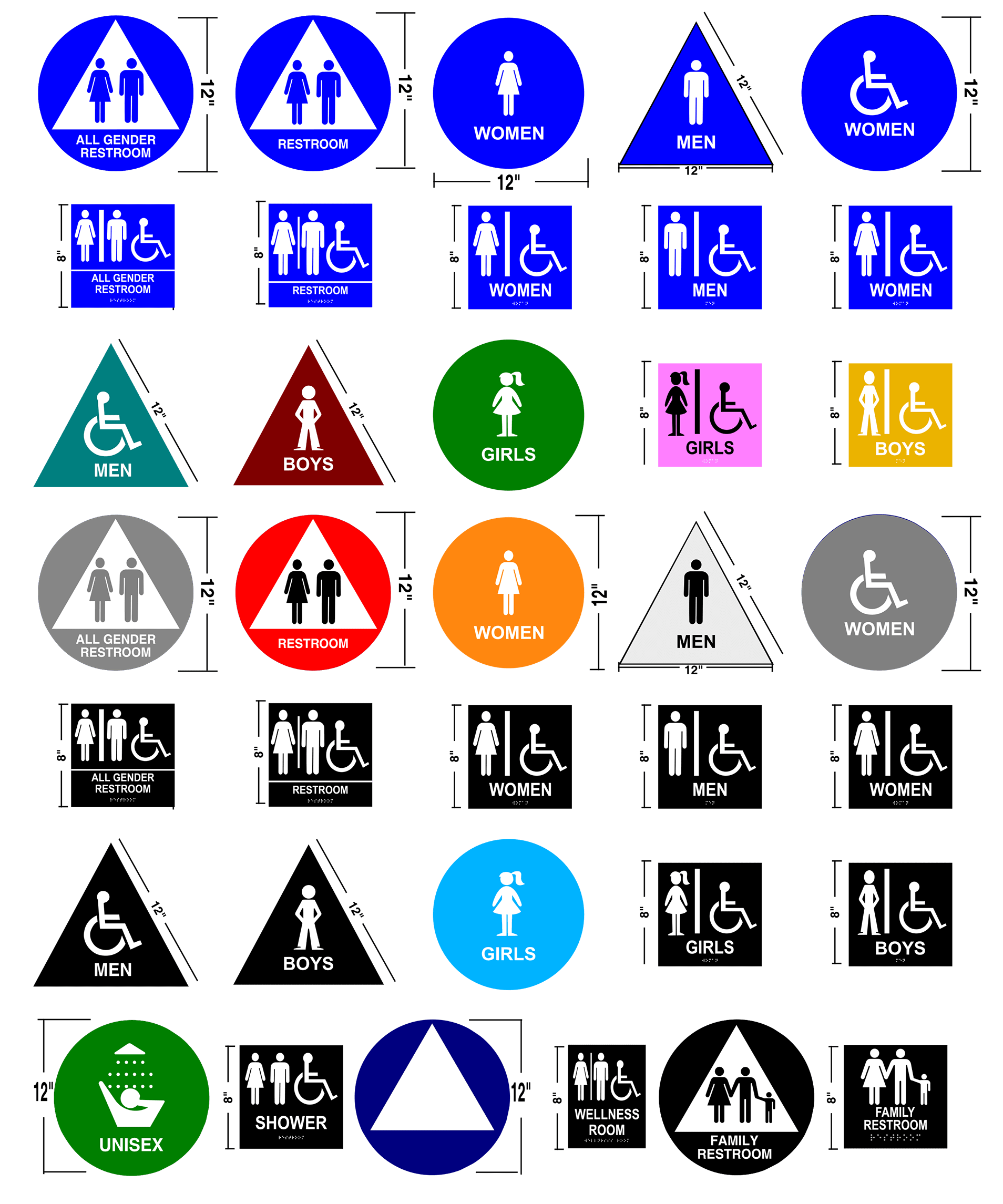ADA Signage: Guaranteeing Availability and Conformity in Public Spaces
ADA signage plays an essential duty in ensuring access and conformity within public spaces, considerably adding to a comprehensive environment for individuals with impairments. By adhering to ADA standards, signs not only helps with navigating however additionally highlights an organization's commitment to variety and equality. As we discover the nuances of ADA signage, from responsive attributes to make details, it's vital to think about exactly how these aspects coalesce to copyright the civil liberties of all individuals. What are the usual pitfalls companies deal with in maintaining compliance, and exactly how can future trends in signage proceed to drive ease of access onward?
Relevance of ADA Signage
In modern culture, the importance of ADA signage expands past simple conformity with legal mandates to symbolize a commitment to inclusivity and ease of access for all people. These indications are vital in creating environments where people with handicaps can browse public spaces with the very same convenience and freedom as those without impairments. By offering standardized and clear info, ADA signage makes sure that everyone can access centers, services, and information without obstacles.
The significance of ADA signage lies in its ability to enhance the quality of life for people with disabilities by advertising equal gain access to. It gets rid of the barriers that may otherwise impede their capability to participate completely in area life. These signs serve as noticeable signs of a company's commitment to variety and equal rights, showing wider social worths that promote the rights and self-respect of all individuals.
Furthermore, ADA signs plays a vital role in public safety and security. By leading people to exits, restrooms, and other crucial centers, it guarantees that all people, no matter physical ability, can leave safely throughout emergencies. In summary, ADA signage is not just a regulative requirement but an effective tool for promoting a comprehensive and fair culture.
Trick Aspects of Compliance

Placement is vital; indications should be mounted in places that are obtainable and quickly noticeable. Usually, signs ought to be mounted between 48 and 60 inches from the ground to guarantee availability for both standing and mobility device customers. Tactile aspects, such as Braille, are vital for people with visual problems, giving critical information in a non-visual layout.
High-contrast colors between the message and history are needed to boost readability for people with low vision. The ADA mandates particular comparison proportions to ensure clearness. Furthermore, character size is a vital factor to consider, with minimal height requirements determined by the checking out range to ensure readability from numerous angles.
Design Considerations for Access
Designing easily accessible signage needs a meticulous technique to guarantee it fulfills the requirements of all customers, particularly those with handicaps. This entails thinking about different layout aspects that enhance readability and functionality. Trick elements include the choice of font, shade contrast, and responsive functions. Fonts ought to be sans-serif, with clear and straightforward letterforms, to facilitate easy analysis. The dimension of the text is just as critical, with ADA guidelines advising a minimum height based upon seeing range to guarantee readability.
Contrasting colors in between message and background are important for exposure, especially for people with visual disabilities. Furthermore, responsive aspects, such as Braille and elevated characters, are essential for individuals who are blind or have low vision.
In addition, the placement of signage plays a significant function in ease of access. Indications ought to be mounted in locations that are quickly reachable and unhampered. Making sure that signage is mounted at proper heights and angles allows all individuals, including those utilizing mobility devices, to interact with them properly.
Common Errors to Prevent

Another common error is the wrong positioning of signage. ADA standards define accurate height and area requirements to guarantee that indicators are reachable and quickly noticeable by all people, including those utilizing wheelchairs. Overlooking these guidelines not only obstructs ease of Visit Your URL access yet likewise runs the risk of non-compliance with lawful criteria.
In addition, inadequate contrast between message and history is a regular oversight. Ample comparison is necessary for readability, specifically for people with reduced vision. Developers often pick shades that are visually enticing yet lack the required comparison, providing the text difficult to determine.
Finally, some developers fail to include responsive elements, such as Braille, which are crucial for individuals that are blind. Omitting these functions not only causes non-compliance with ADA policies however likewise limits accessibility for a segment of the population that relies on tactile info.
Future Trends in Signage
Innovations in innovation and boosting awareness of inclusivity are forming the future patterns in signs design. As culture comes to be extra aware of varied demands, the assimilation of wise technologies right into signage is obtaining grip. Digital signs, for circumstances, is progressing to consist of real-time updates and interactive attributes, which can be important in giving dynamic info in public rooms. These indicators usually integrate touch displays or gesture-based controls, enabling customers to browse content tailored to their details demands.
Another emerging fad is the utilization of increased reality (AR) to improve customer experience. AR-enabled signage can overlay digital information onto the physical atmosphere, offering aesthetically damaged individuals with auditory or haptic comments. ADA Signs. This technology not just boosts accessibility however likewise creates an appealing experience for all individuals
Sustainability is additionally a substantial aspect affecting signs trends. Environment-friendly products and energy-efficient lighting services are being focused on to straighten with worldwide environmental goals. Improvements in materials scientific research are leading to the development of more weather-resistant and resilient indicators.
Verdict
ADA signage plays a crucial duty in ensuring accessibility and conformity within public areas by including tactile components, high-contrast colors, and critical placement. The adherence to ADA criteria not just promotes safe navigating for individuals with specials needs however likewise signifies an organization's commitment to variety and inclusivity. By staying clear of common blunders and welcoming future patterns, public areas can continue to advance check that these worths, ensuring that the legal rights and self-respect of all individuals are respected and supported.
ADA signs plays an important role in assuring availability and compliance within public areas, considerably adding to a comprehensive environment for individuals with impairments. As we check out the subtleties of ADA signs, from responsive functions to develop ins and outs, it's crucial to take into consideration just how these components coalesce to maintain the legal rights of all individuals.In contemporary society, the importance of ADA signage expands beyond simple compliance with lawful requireds to embody a her explanation dedication to inclusivity and ease of access for all people. By offering clear and standard information, ADA signage ensures that everybody can access facilities, solutions, and info without obstacles.
ADA signs plays an important duty in ensuring availability and compliance within public spaces by incorporating tactile aspects, high-contrast colors, and critical positioning. (ADA Signs)